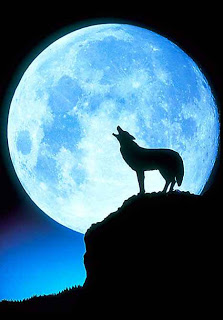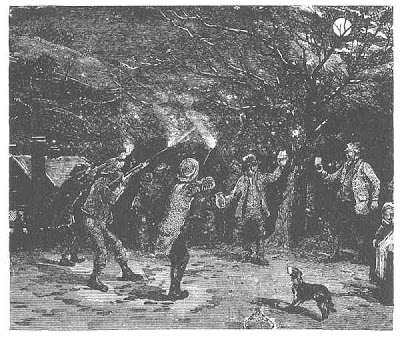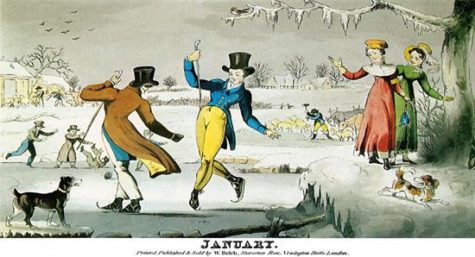January
Poseidon was once worshiped in every part of Greece as a God of general importance to the community. In ancient Greece, the feast day in his honor was widely celebrated at the beginning of the winter.
POSEIDO′NIA (ποσειδώνια), a festival held every year in Aegina in honour of Poseidon. It seems to have been celebrated by all the inhabitants of the island, as Athenaeus calls it a panegyris, and mentions that during one celebration Phryne, the celebrated hetaera, walked naked into the sea in the presence of the assembled Greeks. This was possibly because in Greek mythology, the sea god Poseidon is one of the most lascivious of the gods, producing more offspring than other note worthily randy gods.
Greek calendars vary from place to place, but in Athens and other parts of ancient Greece, there is a month that corresponds to roughly December/January that is named Poseideon for the sea-god Poseidon. The month of Poseidonia’s most anticipated and most important festival is the feast of the Poseidonia, a winter festival in honor of Poseidon. Since Poseidon is a sea god it is curious that his festival would be held during the time the Greeks were least likely to set sail.
It was celebrated with the pouring and drinking of wine, merriment, bonfires, and most likely a form of gift giving. Not much more is known about the way it was celebrated.
On a larger scale, “there was a festival once every fifth year at Sunium in honor of Poseidon – evidently, then, a major event. Also, animal offerings to Poseidon were a common feature at the feast days of other gods, including the “festival at the temple of Hera on the 27th of Gamelion,” which honored the goddess “together with Zeus the Accomplisher, Kourotrophos and Poseidon.”
Related Festivals:
- Haloea – Jan 8 thru 9th
- Poseidonia of Aegina – A Midwinter Festival lasting as long as 2 months
Collected from various sources
Wassailing the trees occurred on old “twelfth night”, the 12th night after Christmas eve, or January 17th on the old calendar. (Other calendars show the date as January 5th.)
Obviously traditions varied, but in Devonshire, Herefordshire and in other parts of the West Country of England (as well as elsewhere no doubt) families would hold a feast with cakes, cider and in some areas beer and ale too. After a time of eating and drinking everyone trooped out to the orchard to wassail the trees, and wake them up from winter for the coming season as well as scare off any bad energy, spirits or demons.
Ale, beer or cider soaked toast, in some areas special cakes, would be placed in the tree branches or in a fork of the tree, and then be splashed with more cider. Trees might be beaten with sticks, pounded on, pots and pans clanged, and in appropriate eras, guns that had been loaded with just powder (no shot) would be fired at the trees.
While this went on, others in the group bowed their heads and sang the special “wassail song”.
Variations include:
Old apple tree, we’ll wassail thee
And hoping thou wilt bear
The Lord does know where we shall be
To be merry another year.
To blow well and to bear well
And so merry let us be
Let every man drink up his cup
And health to the old apple tree
(Spoken)
Apples now, hat-fulls, three bushel bag-fulls,
tallets ole-fulls, barn’s floor-fulls,
little heap under the stairs
Hip Hip Hooroo
Hip Hip Hooroo
Hip Hip Hooroo
source: Folk Info
In India a ritual was held when the the cotton boles (pods) ripen and burst. When this change in the plant occurs, it was the custom to select the largest plant in the field and having sprinkled it with buttermilk and rice water, to bind it all over with pieces of cotton taken from other plants in the field.
The selected plant is called “Mother Cotton” and after salutations are made to it, prayers are offered that the other plants may resemble it in the richness of their produce.
In other areas of India, when the cotton pods begin to burst, women go round the field, and as a kind of lustration, throw salt into it, with similar supplications that the produce may be abundant. The practice appears to be observed in somewhat similar fashion to the Ambravalia of the Romans and the Field-Litanies of the English Church.
Cotton is a kharif crop which requires 6 to 8 months to mature. Dates for this ritual vary from year to year, region to region because its time of sowing and harvesting differs in different parts of the country depending upon the climatic conditions. In Punjab and Haryana it is sown in April-May and is harvested in December-January that is before the winter frost can damage the crop.
November’s Full Moon beckons us to look deep within. With the Sun in Scorpio, the Snow Moon is a potent time to look beyond the obvious. This is an excellent time for dreamwork and lends its energies easily to meditation and divinatory efforts as well as projects that require endings. Use the Snow Moon’s energy for setting magickal goals into motion, as well as planning for the reinvention of your life.Take advantage of this transitional period to set your goals for the future in motion.
~From: 2008 Witches’ Spell-A-Day Almanac
January starts the year with a plethora of fun, frolicsome festivity. The new year in particular is celebrated by at least 170 nations. In terms of energy, January focuses on beginnings. It’s a time for personal renewal, starting any beloved project, and sustaining those things already in progress.Magic for health, protection, and prosperity is particularly augmented by working during this month. It’s also good time for spell work having to do with beginning and conceiving; protection; reversing spells; conserving energy by working on personal problems that involve no one else; getting your various bodies to work smoothly together for the same goals.
Weather Watching:
It is said that whatever the weather is like the first twelve days of January indicates what the weather will be like for the next twelve months. Each day equals one month in succession.
January Birth Signs
(Celtic, Nordic, Astrological, etc)
- Dec 22 to Jan19 – Sun in Capricorn
- Dec 22 to Jan 21 – Sign of the Carnation Flower
- Dec 23 to Jan 1 – Sign of the Apple Tree
- Dec 24 – Jan 21 – Sign of the Birch Tree
- Jan 1 to Jan 11 – Sign of the Fir Tree
- Jan 12 to Jan 24 – Sign of the Elm Tree
- Jan 21 and Feb 19 – Sign of the Orchid Flower
- Jan 21 to Feb 19 – Sun in Aquarius
- Jan 21 – Feb 17 – Sign of the Rowan Tree
- Jan 25 to Feb 3 – Sign of the Cypress Tree
January – the month of new beginnings. January was introduced into the Roman calendar by a legendary king of Rome, Numa Pompilius (c. 715 – 673 BCE), who named it in honor of Janus, the god of doors and openings, beginnings and endings.
Since January is reckoned as the first month of a new year, this connection with the god Janus is appropriate. It is an excellent time to work on putting aside the old and outdated in one’s personal life and making plans for new and better conditions.
 January 25 is St. Paul’s day, a festival of the Roman and English churches in commemoration of St. Paul. This day is thought to be prophetic as to the weather of the year:
January 25 is St. Paul’s day, a festival of the Roman and English churches in commemoration of St. Paul. This day is thought to be prophetic as to the weather of the year:
“If St. Paul’s day be fair and clear, It doth betide a happy year; If blustering winds do blow aloft. Then wars will trouble our realm full oft; And if it chance to snow or rain, Then will be dear all sorts of grain.”
In Germany when the day proved foul the common people used to drag the images of St. Paul and St. Urban in disgrace to duck them in the river.
- On the day of the conversion of St . Paul, (January 25th,) the four winds wrestle and the winner will blow most of the year. (Belgium.)
- If it rains on St. Paul’s day there will be plenty of mushrooms. (Bohemia.)
Other omens and folklore for St Paul’s day include the following:
- Fire will not burn a man born on St . Paul’s day, but if a woman who was born on that day is burned, the wound will never heal.
- Interestingly, in Sicily, it doesn’t matter what day you were born on – if you are a man fire will not burn you, but if you are a woman it will not only burn, it will eventually cause your death!
On a more positive note:
- If you set your hens to hatch on Paul’s day, they will become good layers.
Found in: Encyclopedia of superstitions, folklore, and the occult
January 25, the birthday of Scotland’s most famous poet, Robert Burns (1759-1796), has become an occasion for Scots all over the world to gather together in his honor. A Burns Night supper usually includes haggis, a traditional dish of the heart, lungs, and liver of a sheep or calf minced with suet, onions, oatmeal, and seasonings. Burns’s words: “Hail Great Chieftan o’ the Puddin-race!” greets the dish’s entry into the room. Men wear kilts and women their tartan sashes, and the evening’s celebration includes reading Burns’s poems and singing his songs, ending with one of his most famous, “Auld Lang Syne.
Found at Almanac.com
 There are two feast days in the year which are dedicated to St Peter. January 16, and June 29 (which is the feast of Saints Peter and Paul). What follows is lore and superstition surrounding St Peter’s day:
There are two feast days in the year which are dedicated to St Peter. January 16, and June 29 (which is the feast of Saints Peter and Paul). What follows is lore and superstition surrounding St Peter’s day:
- No building should ever be begun on St . Peter’s day. It will never prosper.
- The Wallachians say that on St. Peter’s day all roads are guarded by serpents, and whoever kills one on that day will be lucky all the year.
- If it rains on St. Peter and St. Paul, there will be plenty of mushrooms.
- If you set your hens to hatch on Peter’s and Paul’s day, they will become good layers.
- Make nests for the hens on St . Peter’s day, And many ‘s the egg that they will lay.
Collected from various sources
 In Sweden, January 13, St Knut’s Day, is the traditional day to discard the Christmas tree and end the season’s festivities. A children’s party is the favored way to strip the tree of its decorations, after which the children are free to “plunder” the edible treats and small gifts placed on the tree especially for the occasion.
In Sweden, January 13, St Knut’s Day, is the traditional day to discard the Christmas tree and end the season’s festivities. A children’s party is the favored way to strip the tree of its decorations, after which the children are free to “plunder” the edible treats and small gifts placed on the tree especially for the occasion.
This Christmas tree plundering is often accompanied by smashing up the gingerbread houses and eating them while discarding of the decorations. Finally, everyone “dances” the tree out the door. Singing special songs, they pick up the tree and toss it out into the snow.
However in Finland, the tradition is quite different:
Called Nuutinpäivä, there has been a tradition somewhat analogous to modern Santa Claus, where young men dressed as a goat (Finnish: Nuuttipukki) would visit houses. Usually the dress was an inverted fur jacket, a leather or birch bark mask, and horns. Unlike Santa Claus, Nuuttipukki was a scary character.
The men dressed as Nuuttipukki wandered from house to house, came in, and typically demanded food from the household and especially leftover alcoholic beverages. In Finland the Nuuttipukki tradition is still living at areas of Satakunta, Southwest Finland and Ostrobothnia. However, nowadays the character is usually played by children and now involves a happy encounter.
A proverb from Noormarkku says:
Hyvä Tuomas joulun tua,
paha Knuuti poijes viä
“Good Thomas brings Christmas,
evil Knut takes it away.”
Courtesy of: almanac.com and Wikipedia
 Tonight is the night of the Wolf Moon. This first full moon of the new year is a time of silence and sitting by the home fire. As the wild winter howls, appreciate the warmth of home and family.
Tonight is the night of the Wolf Moon. This first full moon of the new year is a time of silence and sitting by the home fire. As the wild winter howls, appreciate the warmth of home and family.
Now is the time to go within and plan the changes you will make in the spring. Consider now what you will plant. Start a moon journal to record your lunar tides and write down your spring dreams.
Correspondences:
- Colors: Black and white, silver
- Gemstones: Hematite
- Trees: Birch, Hazel
- Gods: Inanna, Freyja
- Herbs: Thistle, nuts and seeds, marjoram
- Element: Air
Full Moon names started with Native Americans as tribes kept track of the seasons by giving distinctive names to each recurring full Moon. The names actually applied to the entire month in which each occurred. There was some variation in the names based on tribes. European settlers followed that custom and created some of their own names.
Sometimes it is also referred to as the Cold Moon, Old Moon, or the Moon After Yule. Some called it the Full Snow Moon, but Wolf Moon seems most appropriate, in native cultures, because amid the cold and deep snows of midwinter, the wolf packs howled hungrily outside their small villages, huts, and teepees. Since the lunar month is only 29 days long on the average, the full Moon dates shift from year to year.
This is a good time to work on magic related to protection, both physical and spiritual. Use this time to develop your inner self, and advance spiritually, becoming closer to the higher aspects of your deities.
More about the Full Wolf Moon
It’s been a tough month for some of us. I thought it fitting to toss out some symbolic observations about the January Wolf Moon with a goal to offer inspiration to folks facing some challenges right now.
- Lunar Symbolism:
Before blasting off into Wolf Moon symbolism, let’s take a look at lunar implications. Subtle, cunning and soft in silky shadows, the moons meanings can be slippery. But, to those who grasp moon symbolism, great insights follow. Typically feminine in archetypal understanding, the moon carries themes of cycles and fertility.
Moreover, the moon conveys a kind of creativity that is born from veiled magic. Consider the moon’s growth cycles (waxing, full, waning, new). These phases are wrought from the moon’s movement. And, the manifestation of her development is made known to us through light and shadow.
What’s the symbolic lesson here? Progress is sometimes subtle. Manifestations of evolution often occur behind the scenes, in shadow – before we “see the light” or the end-product of our vision.
When contemplating this month’s full moon and its partnership with the Wolf, we must not cram our intellect into the void. Rather, the Wolf Moon asks us to use intuitive instinct in soft ways.
The gifts of this full moon come to our senses like steam rising over sacred waters marbled with frosty stillness.
Wolf Symbolism and Wolf Moon Solutions:
Strategic, resourceful and incredibly communicative, the Wolf is a noble mentor for humankind. Wolves have specific protocol and rank within their packs. This observation is a cue to look to community for creative solutions during this full moon. Communicate with those in your pack to help you with your challenges. But don’t break taboo. If you follow specific traditions in social communication, hold to them. In fact, use this full moon to honor traditions of your heritage. Take time to honor your elders too. Tribal rituals should be heeded this time of year.
Wolves are vastly expressive. Sure, their vocalizations (baling, howling and barking) are legendary, but Wolves also have an complex system of body language and even eye contact to convey intent and current state of being. Discipline in the pack is rarely corporeal. Rather, behavior is admonished or reinforced by intricate expressions. One look from the Alpha can convey as much power as a physical blow.
There’s big medicine in this. Use this full moon to get in touch with your own modes of expression. Explore your own eye contact and body language. Examine yourself in the mirror (yes, I’m serious) as you’re talking on the phone. View yourself objectively. What are your expressions conveying? How can you modify or enhance your body language to portray more authority or power? Or, perhaps more softness and sensuality is needed. Too often we are unconscious about our eye and body movements in the scheme of social interaction. This is a great time to ponder these nuances of communication.
Wolves are also phenomenally resourceful. In fact, their resourcefulness is partly why this moon carries the Wolf moniker. January is a brutal month in the northern regions. The frigidity of winter crunches life to a stand-still in the wild. To be sure, it’s a time of “sink or swim” to all wildlife exposed to the elements this time of year.
Wolves, however, often thrive during this lean month. They are designed to handle the brutality of cold quite well. Furthermore, as Wolves are inclined to pick off weaker animals, January offers up a host of feasting options. Perhaps we can use the resourcefulness of the Wolf to reconsider our options in life. Maybe what seems bleak or lame in our life is actually an invitation for opportunity. Food for thought.
I hope these symbolic ideas about the cold Wolf Moon inspire you to take advantage of January’s lunar fullness. Take a pause on the evening of this month’s full moon to contemplate your own inner wisdom too. I bet your findings will be illuminating.
~collected from various sources, including Symbolic Meanings










